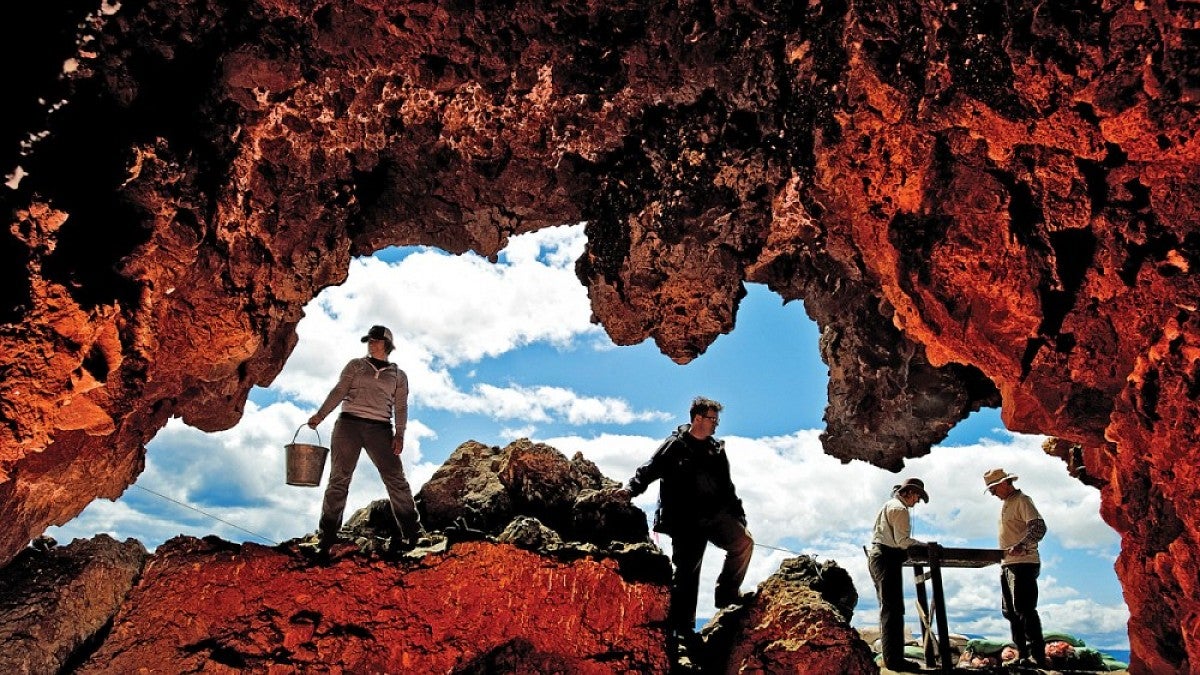The popular "Oregon – Where Past is Present" exhibit at the Museum of Natural and Cultural History is getting a makeover. The $500,000 project will refresh the exhibit, adding new interactive technology, a display devoted to Oregon's Paisley Caves and a duck sculpture of mysterious origin.
The museum’s 2,000 square-foot south wing, which has been home to the exhibit for a decade, will close to the public Jan. 25 as construction begins on the cultural exhibit space.
“Oregon’s human story stretches back at least 14,000 years," said Ann Craig, the museum’s public programs director. "Our goal is to emphasize the continuous, ongoing nature of that story — from the earliest societies to contemporary cultures to the Oregonians of the future.”
Part of the story will be reflected in an enhanced basketry display. The project team will devote one case to ancient fiber artifacts, including the oldest basketry fragment ever uncovered in Oregon. Adjacent cases will display historical and contemporary basketry from Oregon and other Western states.
Redesigned interpretive panels, improved lighting and greater accessibility will contribute a brighter overall look and feel, while new artifacts will join the “Oregon – Where Past is Present” lineup for the first time.
Among the new items to go public is a stone sculpture of a duck that was uncovered in 1956 near Mapleton, west of Eugene.
“The duck is unusual," said Pamela Endzweig, director of the museum's anthropological collections. "It differs stylistically from typical Columbia River and Northwest Coast stone carvings, and it comes from an area where few stone representations of animals have been found. It’s a unique item — and it seems especially appropriate to include it in an exhibit at the University of Oregon."
An entirely new display area will highlight the Paisley Caves of south-central Oregon — and the groundbreaking research conducted there by museum archaeologists. The “Paisley Caves and the First Americans” exhibit will help tell the story of Oregon’s deep cultural past, inviting visitors to re-examine long-held ideas about when humans first arrived in North America.
The interactive exhibit will feature 14,300-year-old coprolites (dried human feces) along with bone and wood artifacts that have never before been on public display.
The Paisley Caves, which are under the jurisdiction of U.S. Bureau of Land Management, made headlines in 2012 when museum archaeologist Dennis Jenkins described the site's coprolites in the journal Science. The specimens, which are the oldest directly dated human remains in the Western Hemisphere, revealed a human occupation at the site that predates Clovis — long regarded as North America’s first culture — by 1,000 years.
Jenkins has conducted research at Paisley Caves since the early 2000s in partnership with the Klamath tribes and the BLM.
“From Luther Cressman’s work in the 1930s to Dr. Jenkins’ more recent research, museum archaeologists have uncovered pivotal pieces of the puzzle surrounding Oregon’s earliest human societies,” said museum director Jon Erlandson. “We look forward to sharing these important stories with our visitors.”
Museum staff planned the redesign using feedback from focus groups and interview participants as well as observations of visitors in the existing hall. Input from key stakeholders, including UO faculty and students, tribal members and K-12 teachers and students also helped shape the plan.
The project will feature architecture by Eugene’s Robertson Sherwood Architects and exhibit design by Alchemy of Design, a Portland-based firm.
The project is made possible through a combination of state funding, philanthropic gifts and grants. In moving forward with the makeover, the museum acknowledges the efforts of state Rep. Nancy Nathanson, D-Eugene, and the Oregon legislative assembly, as well as the support of The Coeta and Donald Barker Foundation, Oregon Cultural Trust, Pederson Family Trust, Soderwall Endowment, the museum's Friends and Sandal Society, and anonymous donors.
—By Kristin Strommer, Museum of Natural and Cultural History


